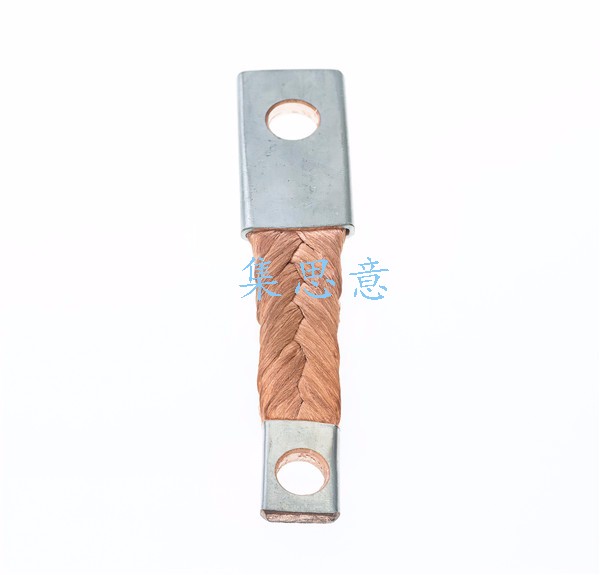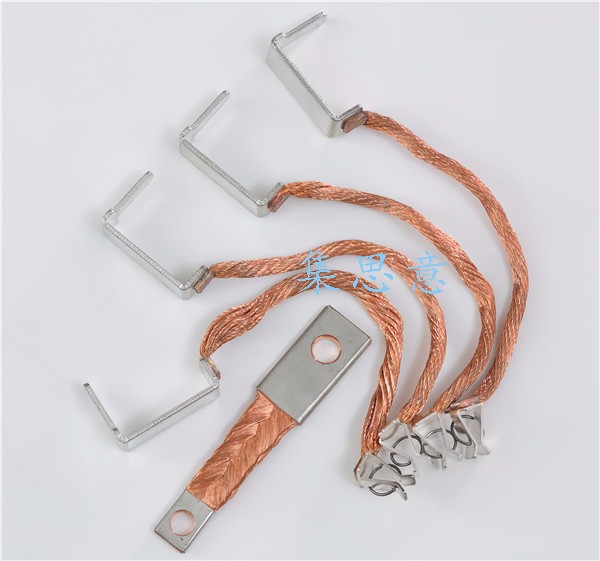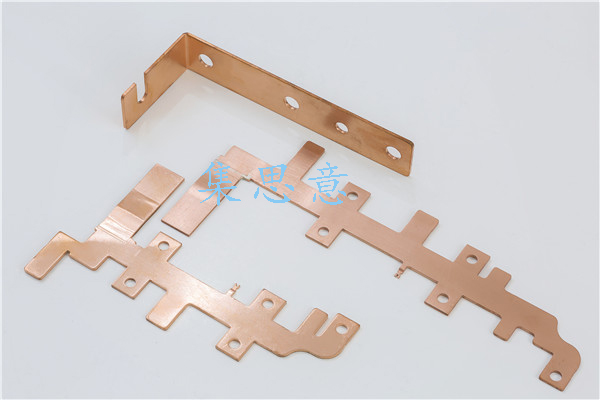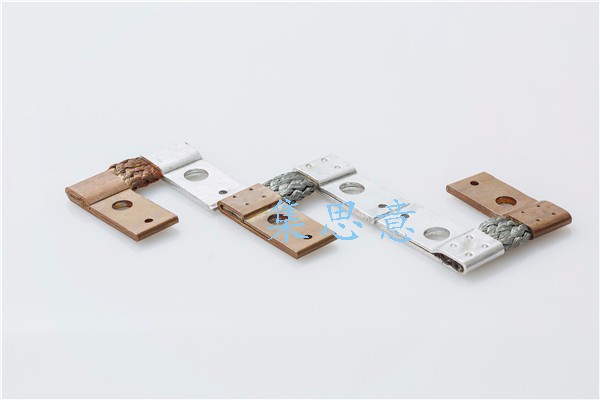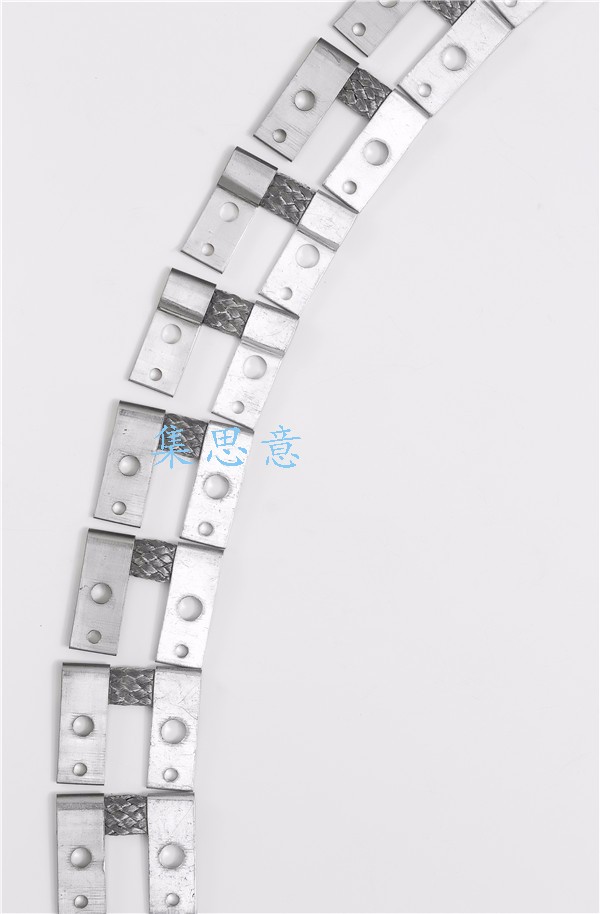Characteristics and application of copper conductive tape
Copper conductive belt is a kind of conductive equipment which is mainly used for non-horizontal charged movement and medium and low voltage circuit breakers.
Copper braided conductive tape conductor materials: copper braided wire, copper braided tape, tinned copper braided wire, tinned copper braided tape, copper stranded wire. The copper braiding belt is made of oxygen free copper wire, with the wire diameter of 0.10 mm, 0.12 mm and 0.15 mm. It can meet the requirements of customers, such as softness, electric strength, etc.
Specifications:2mm2, 2.5mm2, 3.5mm2, 4mm2, 6mm2, 8mm2, 10mm2, 12mm2, 16mm2, 20mm2, 25mm2, 35mm2, 50mm2, 75mm2, 95mm100mm2, 120mm2.
Model: sub-tz / tzx-15, TZ for red copper, tzx for tinned copper, 0.15 for single wire diameter. The parameters of copper braid with different cross-sections are different. The large cross-section copper braid can be divided into single layer or multi-layer.
Copper braided wire: DC resistance (20 ℃) not more than zero point zero two two Ω? The DC resistance of m m / M tin copper braided wire (20 ℃) is less than zero point zero two three four Ω? Mm / m
Process: bare copper wire, copper braided wire, as conductor, copper terminals at both ends, joint size according to customer requirements, using cold pressing method. Tin and silver plating according to customer's requirements. Then through special treatment, the soft connection with high strength and high current is made.
1、 Product features:
The DC resistance of copper braided wire (20 ℃) is less than zero point zero two two DC resistance of Ω / m, tin and copper braided wire (20 ℃). The DC resistance of copper wire shall not exceed zero point zero two three four Ω/m。
2、 Product performance:
Function: copper braided wire is used as conductor, copper tube is used at both ends, silver plating treatment is applied to the surface of copper tube, the size of joint is produced according to the matching size of customers, and then through special treatment, soft connection is made, soft grounding, high conductivity, strong fatigue resistance, and can be produced safely according to the requirements of customers.
Copper wire soft connection adopts high and low voltage electrical appliances, vacuum electrical appliances, mine explosion-proof switches, automobiles, locomotives and related products for soft connection. Clean copper wire or tinned copper wire weaving, made of cold pressing method, can be tinned and silvered according to the user's requirements.
It is mainly used for non horizontal live motion and medium and low voltage circuit breakers.
Application: tinned copper braid is commonly used in electrical equipment, switchgear, electric furnace, battery, equipment, machinery, automobile, grounding and other industries, mainly used in conductive, power transmission, non horizontal live motion and low and medium voltage electrical appliances.
It is widely used in metallurgy, chemical industry, power transmission and transformation engineering, electrical equipment, carbon, electric locomotives, wind turbines and other industries.
Copper conductive belt is a kind of conductive equipment which is mainly used for non-horizontal charged movement and medium and low voltage circuit breakers.
Copper braided conductive tape conductor materials: copper braided wire, copper braided tape, tinned copper braided wire, tinned copper braided tape, copper stranded wire. The copper braiding belt is made of oxygen free copper wire, with the wire diameter of 0.10 mm, 0.12 mm and 0.15 mm. It can meet the requirements of customers, such as softness, electric strength, etc.
Specifications:2mm2, 2.5mm2, 3.5mm2, 4mm2, 6mm2, 8mm2, 10mm2, 12mm2, 16mm2, 20mm2, 25mm2, 35mm2, 50mm2, 75mm2, 95mm100mm2, 120mm2.
Model: sub-tz / tzx-15, TZ for red copper, tzx for tinned copper, 0.15 for single wire diameter. The parameters of copper braid with different cross-sections are different. The large cross-section copper braid can be divided into single layer or multi-layer.
Copper braided wire: DC resistance (20 ℃) not more than zero point zero two two Ω? The DC resistance of m m / M tin copper braided wire (20 ℃) is less than zero point zero two three four Ω? Mm / m
Process: bare copper wire, copper braided wire, as conductor, copper terminals at both ends, joint size according to customer requirements, using cold pressing method. Tin and silver plating according to customer's requirements. Then through special treatment, the soft connection with high strength and high current is made.
1、 Product features:
The DC resistance of copper braided wire (20 ℃) is less than zero point zero two two DC resistance of Ω / m, tin and copper braided wire (20 ℃). The DC resistance of copper wire shall not exceed zero point zero two three four Ω/m。
2、 Product performance:
Function: copper braided wire is used as conductor, copper tube is used at both ends, silver plating treatment is applied to the surface of copper tube, the size of joint is produced according to the matching size of customers, and then through special treatment, soft connection is made, soft grounding, high conductivity, strong fatigue resistance, and can be produced safely according to the requirements of customers.
Copper wire soft connection adopts high and low voltage electrical appliances, vacuum electrical appliances, mine explosion-proof switches, automobiles, locomotives and related products for soft connection. Clean copper wire or tinned copper wire weaving, made of cold pressing method, can be tinned and silvered according to the user's requirements.
It is mainly used for non horizontal live motion and medium and low voltage circuit breakers.
Application: tinned copper braid is commonly used in electrical equipment, switchgear, electric furnace, battery, equipment, machinery, automobile, grounding and other industries, mainly used in conductive, power transmission, non horizontal live motion and low and medium voltage electrical appliances.
It is widely used in metallurgy, chemical industry, power transmission and transformation engineering, electrical equipment, carbon, electric locomotives, wind turbines and other industries.

